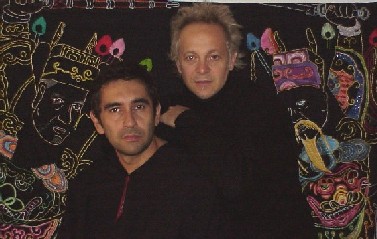"Queer Threads: Crafting Identity and Community"
by Coral Silverman
Jan. 17 - Mar. 16 at the Leslie-Lohman Museum of Gay and Lesbian Art.
Last updated: 01/21/2014
Holland Cotter wrote a great piece in the NY Times last week bemoaning the effect money is having on the art world. He writes of artists churning out “cautious and conservative art”, mainly abstract painting, because its “graphic impact translates well online, where stock can be moved eBay style”. This innocuous work is the kind of art “that the market supports, that dealers are encouraged to sell, and that artists are encouraged to make.” And by his take, museums aren’t doing any better than dealers at showing challenging art because museums have “their eyes glued to the box office.” He ends the piece by calling on artists to “bring art back from the brink of inconsequence”.
In this current art climate, “Queer Threads”, currently on view at the Leslie-Lohman Museum of Gay and Lesbian Art, comes as something of a revelation. The show’s opening coincided perfectly with the publishing of Cotter’s essay and it offers an antidote to the kind of “cautious and conservative” art he describes in it. Superbly curated by John Chaich, the show explores craft, and specifically threads, as a metaphor with which to explore the construction of LGBTQ identity and community. The show includes work by twenty four artists from across the United States, as well as Argentina, Canada, and South Africa.
One standout is “RuPaul Cross Stitch Animation Workshop” by Aubrey Longley-Cook. With 35 Community Workshop participants in Atlanta, she recreated stills from an excerpt of RuPaul’s “Supermodel” music video in colorful cross-stitch. The finished work consists of a two-sided video installation of the animated cross-stitch frames from both the front and the back. Using this meld of handmade craft and new technology, and by showing both the finished product and its ragged backside, she comments on the careful process of beautification that drag queens use to construct the images they present to the world.
Another standout is John Thomas Paradiso’s “Leather Pansy II” in which he embroidered a pretty trio of pansy flowers onto a piece of black leather, enclosed in a traditional plastic hoop, creating a humorous visual pun. The contrast between the delicate handiwork and black leather makes one rethink the connotations embedded in each.
Perhaps the most technically striking piece is Argentinian duo Chiachio & Giannone´s "Familia Guarani", in which they appear as in a traditional marriage or family portrait, wearing the headgear and necklaces of the Guaraní peoples indigenous to South America. Behind their embroidered bodies lies an immaculate and colorful rainforest, hand-embroidered with a level of detail and precision that recalls the Mille-fleurs backgrounds of Medieval tapestries.
Let’s hope that we begin to see more of these types of works directly addressing social and personal issues in commercial galleries, alternative spaces, and major museums. But for that to happen we need more people to search them out, to see them, and to even buy them. It’s up to all of us to bring consequence back into art.
“Queer Threads: Crafting Identity and Community” is on view through March 16, 2014 at the Leslie-Lohman Museum of Gay and Lesbian Art, 26 Wooster Street, New York, New York
http://stagebuddy.com/events/review-queer-threads-crafting-identity-community/


0 Comments:
Publicar un comentario
<< Home